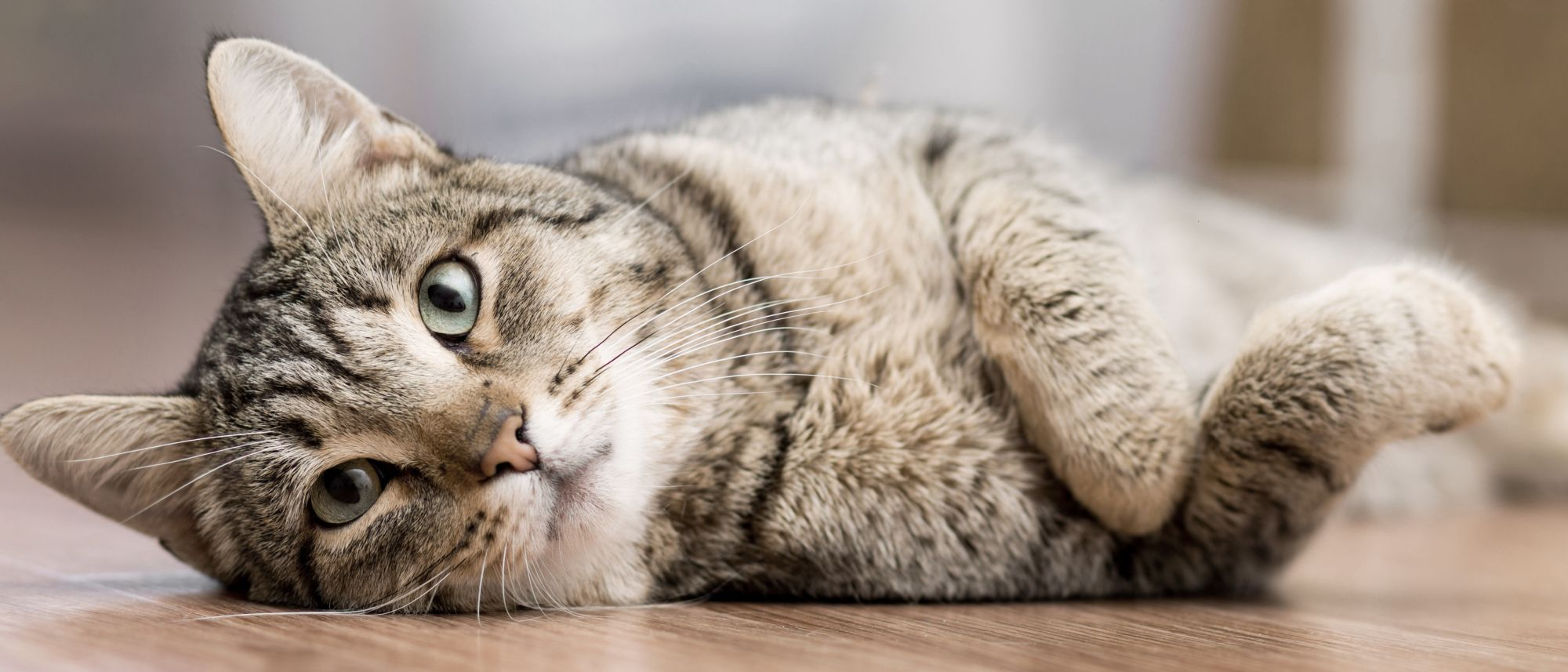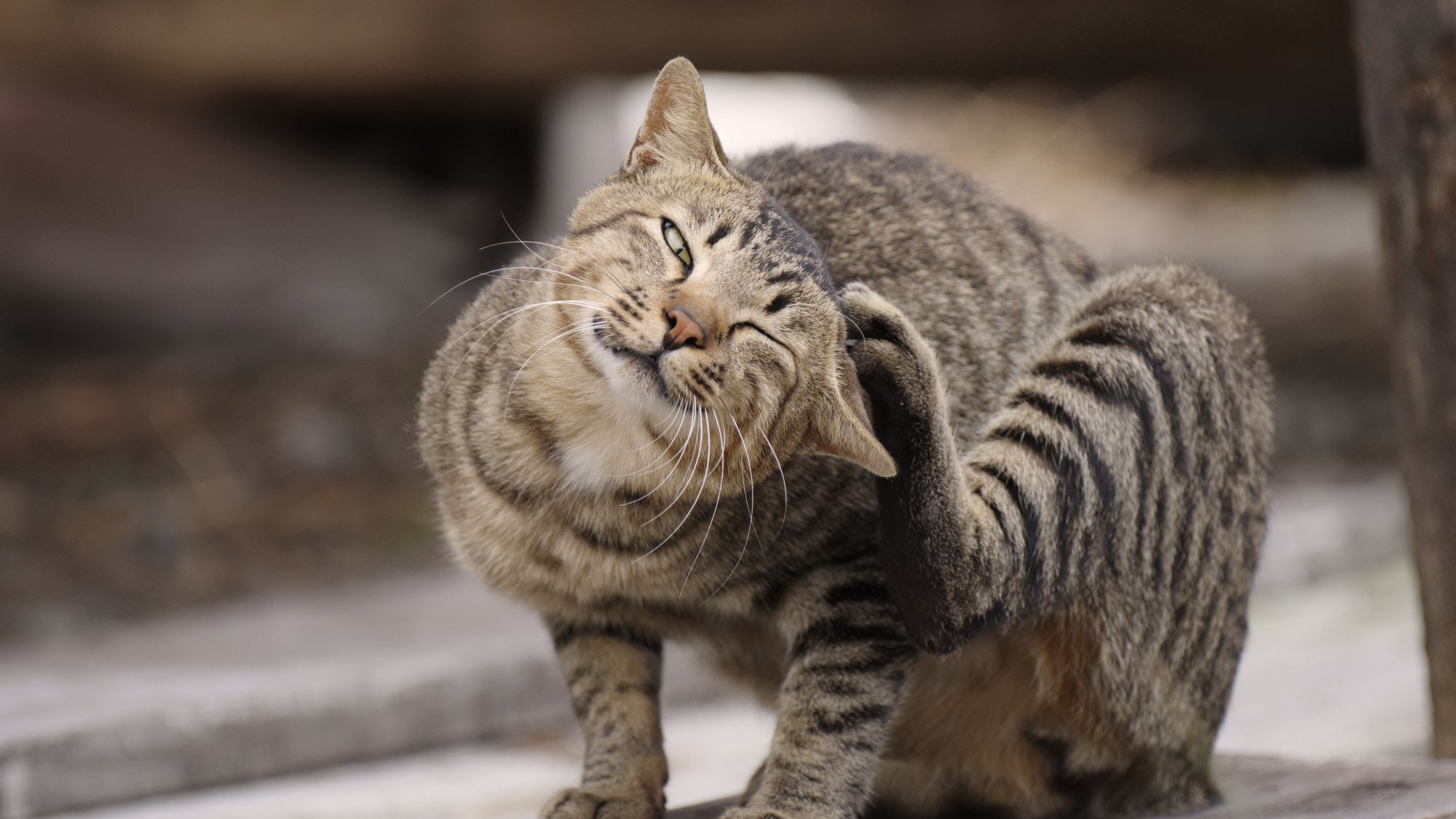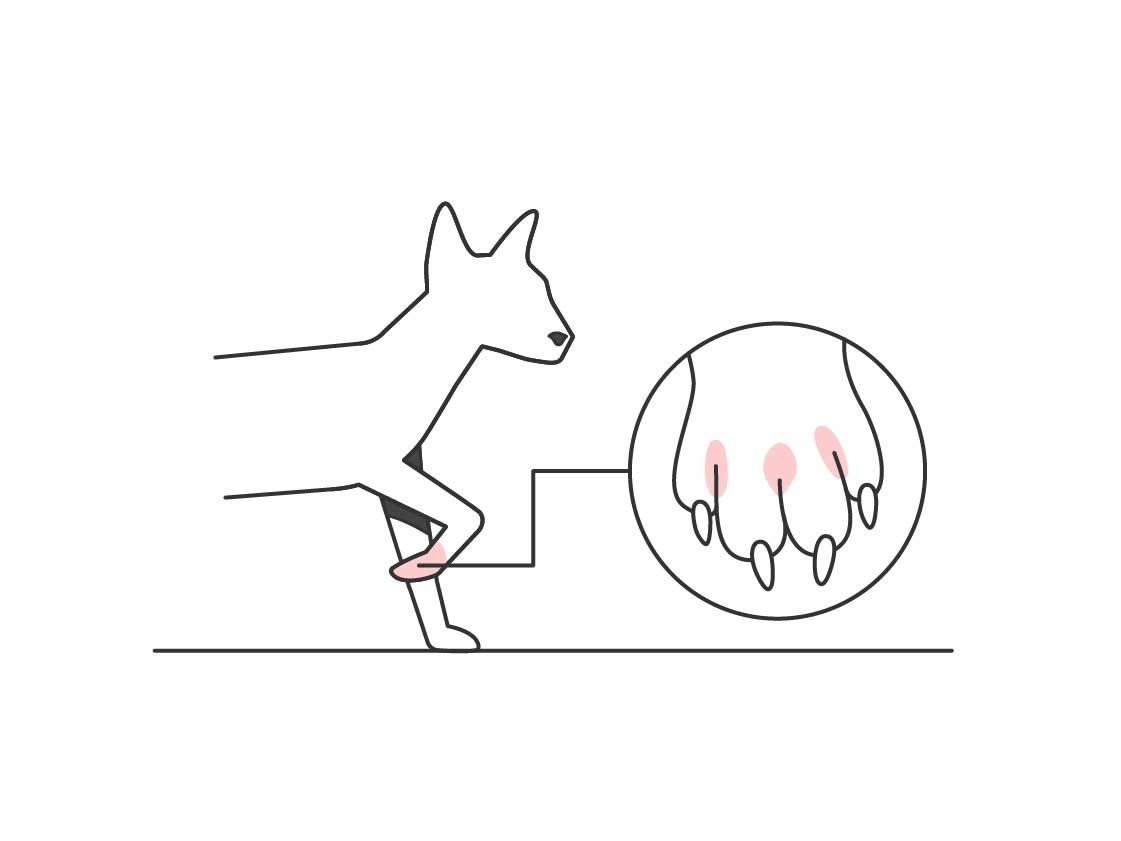Pododermatitis in Cats: Signs and Management
Article

Dermatitis is one of the main reasons owners take their cat to see a vet, with 20% of all medical veterinary appointments being linked to the condition.1
A wide range of health issues can cause dermatitis in cats, from allergies to parasites.
The severity of a cat’s signs and the body parts affected will depend upon which condition has triggered the inflammation. When the skin on a cat’s paws, including their nail folds and footpads, become inflamed, it’s known as pododermatitis.
Common Signs of Pododermatitis in Cats
The signs vary based on the cause. The inflammation may affect one or multiple paws – like the nail beds or the space between their toes.
The classic appearance of pododermatitis can result in:
Skin itchiness is one of the classic traits of dermatitis, so you may see your cat licking, chewing, and biting at their paws. They may also rub up against furniture or scratch more than normal.
Unfortunately, this behavior will only further damage the cat’s skin and may lead to painful sores.
Depending upon which condition is afflicting your cat, the skin inflammation may spread beyond their paws. So you should inspect their ears, head, neck, eyes, and other parts of their body for signs of swelling and redness.

What Causes Pododermatitis in Cats?
Dermatitis is a sign of many common health disorders. Consequently, your cat will require a full veterinary examination to diagnose the cause of their skin inflammation.
Pododermatitis is typically caused by one of the following:
Allergies
A cat’s immune system can sometimes react to harmless substances called allergens. These allergens could be anything from a food ingredient to airborne particles of mold or pollen. The immune system’s response to these allergens is harmful to a cat and can trigger a variety of signs and conditions including pododermatitis. You can learn more about allergies in our articles Spotting the Signs of a Cat Food Allergy and Environmental & Seasonal Allergies in Cats.
Parasites
Fleas, ticks, mites and lice can all cause skin issues in cats, especially if the cat is allergic or hypersensitive to their bites. Mange produces intense itching, swelling, and hair loss in cats and is caused by tiny parasites called mites.
Environmental
From sizzling rooftop tiles to household chemicals, many things can damage or irritate the soft tissue on a cat’s feet.
Hormonal or Metabolic Conditions
Hormone imbalances can bring about skin issues.
Infection
Both bacterial and fungal infections may lead to pododermatitis. See the section below on yeast infections as an example.
Other Causes
Health conditions like obesity, cancer, or an auto-immune disorder could also be behind a cat’s pododermatitis.
Why Do Yeast Infections Affect a Cat’s Paws?
Normally, yeasts are harmless. They live naturally on the skin, and their numbers are kept under control by the immune system. But a change in skin conditions can cause yeasts to multiply and spread disease.Yeast tend to accumulate in warm and humid parts of the body, which makes a cat’s paws and feet particularly susceptible to infection.
Redness, itching, and swelling are all common signs of a yeast infection. You may also see scales, crusts, and sections of thick, discolored skin that look like tree bark or elephant skin if the condition is chronic. Often, the skin will have a strong, foul odor too.
Are Certain Times of the Year Worse for Pododermatitis?
With so many possible causes, pododermatitis can affect a cat at any time of year. But certain seasons offer challenges that may increase a cat’s risk of skin irritation and damage.In the springtime, when the pollen count is high, a cat may be affected by seasonal allergies.
During summer, red-hot sidewalks can scald their feet during warmer months and mold may flourish in the fall. When it's cold, using de-icing chemicals could potentially burn a cat’s pads if they adventure outside.
Your vet will be able to give you tailored advice for your cat as part of their examination.
Could Anything Else Be Causing My Cat’s Feet Problems?
If a cat becomes obsessed with licking or chewing part of its body, like the ankle or toes, it may have a condition called Acral Lick Dermatitis.The problem is characterized by pattern licking, where the cat repeatedly grooms one area. This can lead to hair loss, ulcers, lesions, and infection.
The reason why cats develop this condition isn’t known, but it may be in response to an injury or skin irritation. Boredom or stress may also play a part.
Diagnosis
If you suspect your cat has dermatitis on or around its paws, speak to your veterinarian so they can carry out a proper diagnosis and recommend appropriate treatment options.A skin biopsy, skin scrape or blood sample may be taken to discover the underlying cause of dermatitis.

Another common diagnostic method for dermatitis is allergy testing in the form of an elimination diet trial. This method is often used if a food allergy is suspected. An elimination diet trial helps identify if a particular ingredient is causing the inflammatory reaction that is resulting in dermatitis.
If the elimination diet trial doesn't indicate a food allergy, an environmental allergy may then be considered.
Veterinarians may also take a sample to run a fungal or bacterial culture to check for infections that cause dermatitis.
A veterinarian should be able to confirm if external parasites are causing the irritation by performing a physical examination as some external parasites are visible.
Management for Paw Dermatitis
To understand how to support a cat that has been diagnosed with an illness causing dermatitis, speak to a veterinarian to receive tailored advice.
Depending on the diagnosis, taking into account the severity of the illness and your cat's individual needs, you may find your veterinarian recommends one of the below options:
- Topical treatments (medication applied directly to the skin)
- Oral medication
- Long-term nutritional management
- Altering their natural surroundings
If you suspect your cat has an underlying issue causing dermatitis always speak to a veterinarian for a proper diagnosis and to receive tailored advice.
How Can You Support Your Cat?
Once your vet has determined the cause of your cat’s pododermatitis, they’ll recommend appropriate management options. Their suggestions may include foot soaks, wipes, allergy shots, or antibiotics.
Some of the health conditions that cause skin inflammation are curable, while others, like allergies, require long-term management.
Can Nutrition Support a Cat With Pododermatitis?
In some situations, a vet may recommend a change in diet. Royal Canin’s dermatology range, for example, contains nutrients like vitamins, minerals and omega-3 fatty acids that support skin health.
If your cat has a food allergy, your vet may try to reduce their exposure to a specific protein by suggesting a hydrolyzed or novel protein diet.
If you think your cat is affected by pododermatitis or any of the other health conditions we’ve discussed here, schedule a visit with your vet as soon as possible.
References:
1 Hill PB et al. Survey of the prevalence, diagnosis and treatment of dermatological conditions in small animals in general practice. Veterinary Record 2006; 158: 533-539.
Related articles
Like & share this page